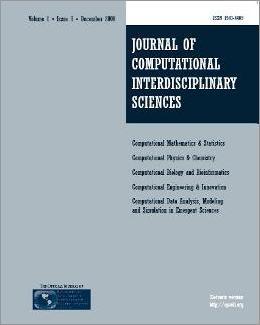
Editorial Office:
Management:
R. S. Oyarzabal
Technical Support:
D. H. Diaz
M. A. Gomez
W. Abrahão
G. Oliveira
Publisher by Knobook Pub


Editorial Office:
Management:
R. S. Oyarzabal
Technical Support:
D. H. Diaz
M. A. Gomez
W. Abrahão
G. Oliveira
Publisher by Knobook Pub
doi: 10.6062/jcis.2011.02.03.0044(Free PDF)
Murillo R.P. Homem, Marcelo R. Zorzan and Nelson D.A. Mascarenhas
Computational optical sectioning microscopy is a powerful tool to reconstruct three-dimensional images from optical two-dimensional sections of a biological specimen acquired by means of a fluorescence microscope. Due to limiting factors in the imaging systems, the images are degraded by both the optical system and detection process. Each of the two-dimensional section of the three-dimensional data set are blurred by contributions of light from other out-of-focus planes. Besides, they are also corrupted by noise due to quantum fluctuations of light. In this work we present a method to perform the restoration of three-dimensional data obtained by fluorescence microscopy. The algorithm consists of the use of a noise reduction procedure based on the Anscombe transformation followed by the Richardson-Lucy deconvolution algorithm. Results showed an improvement on deconvolution performance when using phantoms and real cell images
computational data analysis and simulation in general sciences, computational optical sectioning microscopy, deconvolution microscopy, poisson noise, Anscombe transformation.
[1] SARDER P & NEHORAI A. 2006. Deconvolution methods for 3-D fluorescence microscopy images. IEEE Signal Processing Maga- zine: 32–45.
[2] VERVEER PJ, GEMKOW MJ & JOVIN TM. 1999. A comparison of image restoration approaches applied to three-dimensional con- focal and wide-field fluorescence microscopy. J. Microsc., 193: 50–61.
[3] SEMENTILLI P, HUNT B & NADAR M. 1993. Analysis of the limit to super-resolution in incoherent imaging. J. Opt. Soc. Am. A, 10: 2265–2276.
[4] CONCHELLO J-A. 1998. Superresolution and convergence prop- erties of the expectation-maximization algorithm for maximumlike- lihood deconvolution of incoherent images. J. Opt. Soc. Am. A, 15(10): 2609–2619.
[5] HOLMES TJ & LIU YH. 1988. Maximum-likelihood image restora- tion adapted for noncoherent optical imaging. J. Opt. Soc. Am. A, 5(5): 666–673.
[6] RICHARDSON WH. 1972. Bayesian-based iterative method of image restoration. J. Opt. Soc. Am., 62(1): 55–59.
[7] LUCY LB. 1974. An iterative technique for the rectification of ob- served distributions. The Astronomical Journal, 79(6): 745–765.
[8] MAKITALO M & FOI A. 2011. Optimal inversion of the Anscombe transformation in low-count Poisson image denoising. IEEE Trans- actions on Image Processing, 20(1): 99–109.
[9] GIBSON FS & LANNI F. 1991. Experimental test of an analyti- cal model of aberration in an oil-immersion objective lens used in three-dimensional light microscopy. J. Opt. Soc. Am. A, 8(11): 1601–1613.
[10] AGHDASI F & WARD RK. 1996. Reduction of boundary artifacts in image restoration. IEEE Transactions on Image Processing, 5(4): 611–618. Journal of Computational Interdisciplinary Sciences, Vol. 2(3), 2011